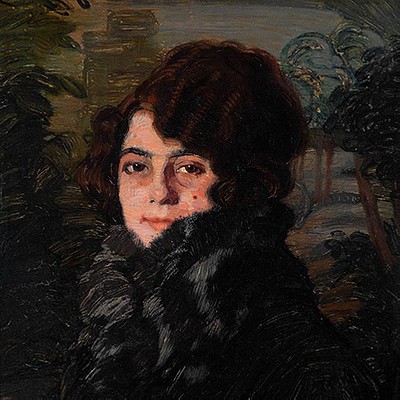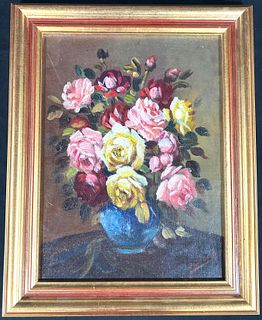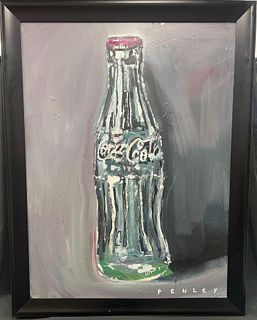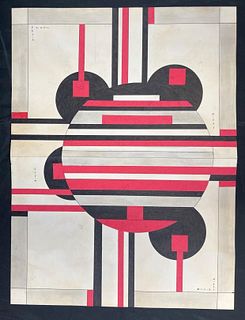MARIANO FORTUNY MARSAL (Reus, Tarragona, 1838 - Rome, 1874). "Landscape with figure", ca. 1854-1855. Oil on canvas.
Lot 43
About Seller
Setdart Auction House
Carrer Aragó 346
Barcelona
Spain
Setdart Subastas was born in 2004 and is currently the first online art auction in Spain with solidity, prestige and reliability guaranteed by our more than 60,000 users. Setdart has a young, dynamic and enterprising team ready to successfully manage the purchase and sale of art works through custom...Read more
Estimate:
EUR€10,000 - EUR€12,000
$10,204.08 - $12,244.90
Absentee vs Live bid
Two ways to bid:
- Leave a max absentee bid and the platform will bid on your behalf up to your maximum bid during the live auction.
- Bid live during the auction and your bids will be submitted real-time to the auctioneer.
Bid Increments
| Price | Bid Increment |
|---|---|
| EUR€0 | EUR€10 |
| EUR€200 | EUR€25 |
| EUR€500 | EUR€50 |
| EUR€1,000 | EUR€100 |
| EUR€3,000 | EUR€200 |
| EUR€5,000 | EUR€500 |
| EUR€10,000 | EUR€1,000 |
| EUR€20,000 | EUR€2,000 |
| EUR€50,000 | EUR€5,000 |
About Auction
By Setdart Auction House
Jul 15, 2021
Set Reminder
2021-07-15 08:00:00
2021-07-15 08:00:00
America/New_York
Bidsquare
Bidsquare : 19th & 20th CENTURY PAINTINGS & ORIENTALISM
https://www.bidsquare.com/auctions/setdart-auction-house/19th-20th-century-paintings-orientalism-7212
Setdart Auction House sofia@setdart.com
Setdart Auction House sofia@setdart.com
- Lot Description
MARIANO FORTUNY MARSAL (Reus, Tarragona, 1838 - Rome, 1874). "Landscape with figure", ca. 1854-1855. Oil on canvas. With apocryphal signature in the lower right corner. Attached certificate of authenticity issued by Mr. Carlos González and Mrs. Montserrat Martí. Measures: 14,2 x 18,5 cm 41 x 45 cm (frame). Landscape scene in which a coast is represented, because we see a cove, a mound with lighthouse and high mountains. The landscape is only inhabited by the figure of a peasant in an attitude of walking towards the sea. The stormy sky takes the same importance in the composition; in a bluish-gray tone, it lets us glimpse part of the support. Fortuny began his training at the Municipal Art School of Reus, and in 1850 he moved to Barcelona with his grandfather. There he continued his studies as a disciple of Domingo Talarn, and entered the School of Fine Arts, where he had as teachers Pablo Milá, Claudio Lorenzale and Luis Rigalt. At the same time he attends Lorenzale's private school, which will determine his inclination for romantic painting in this first stage. In 1858 he settles in Rome thanks to a scholarship, and attends the Chigi Academy. While there, the Diputació de Barcelona proposed him to travel to Morocco to paint the war encounters that were taking place in the area, which will give a total turn to his career. The light of Morocco and the exoticism of the place and its people led him to become interested in aspects totally unknown in his previous production. In 1860 he visited Madrid, where he visited the Prado Museum and became interested in the work of Velázquez and Goya. Shortly after, he began a trip to Europe and finally returned to Rome for good. He attends classes at the French Academy of Fine Arts at the Villa Medici, and in 1861 he visits Florence and comes into contact with the "macchiaioli". He returns to Morocco in 1862, and devotes himself to painting genre subjects in which he captures the movement through color and light. Back in Rome, he continued to focus on orientalist themes. Shortly after he travels to Paris and meets Adolphe Goupil, who will be his dealer from 1866. That same year he visits Madrid again and visits Toledo, where he discovers El Greco. In 1867 he exhibited in the studio of Federico de Madrazo, who became his father-in-law that same year. The following year he returned to Rome, and in 1870 his international fame was consolidated thanks to his exhibition in the Parisian gallery of Goupil. In these years he settled in Granada, in the Fonda de los Siete Suelos de la Alambra, with the idea of tackling new themes with the greater freedom that commercial and critical success gave him. However, in 1872 he was forced to return to Rome, where he remained until his death. Mariano Fortuny is represented in the Prado Museum, the National Gallery in London, the Hispanic Society Museum in New York, the Palazzo Ruspoli in Rome, the Fine Arts Museums of Bilbao, San Francisco, Cincinnati and Boston and the National Art Museum of Catalonia, among many others.
- Shipping Info
-
In-house shipping available. Please inquire at admin@setdart.com.
-
- Buyer's Premium



 EUR
EUR CAD
CAD AUD
AUD GBP
GBP MXN
MXN HKD
HKD CNY
CNY MYR
MYR SEK
SEK SGD
SGD CHF
CHF THB
THB














